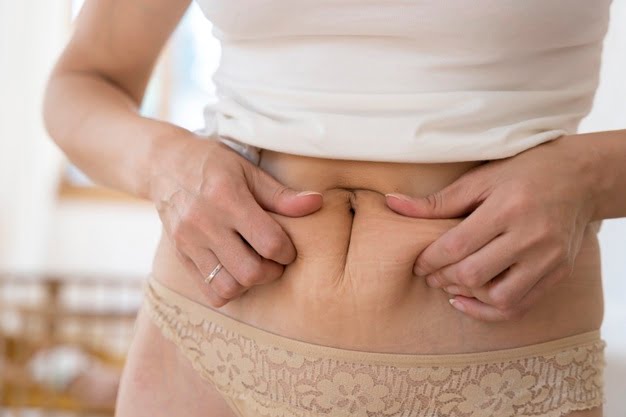How I Recovered After Giving Birth And Maintained My Fitness
- Published on:
- Last update: 09 October 2023

After Giving Birth
Childbirth is a process where you have to go through a lot of pressures, emotional turmoil, pain, and traumas that affect your mental and physical state. I have also been through the same after giving birth to my child. From my perspective, I would like to advise every mother out there that giving birth to a child doesn’t mean you have to let go of your body. Instead, stay strong and put in some effort, treasure it, and treat it very well so that you can become strong and confident enough which would surely help you to improve your motherhood.
I have always wondered about seeing celebrities getting back to awesome shapes after their pregnancies. I was curious about the methods they adapt and also the interventions they got in their whole journey in getting back in shape. Later, after giving birth to my child and while going through that phase, I understood that it is not that simple as I thought but, with a regular exercise plan and lifestyle routine anyone could pull it off easily as I did.
Being a new mother is extremely challenging as you have to go through a lot of physiological as well as psychological stresses. After the whole long process, you will be tested both mentally and physically and will need some time to recover yourselves from the impact of the childbirth journey. It is said that an average postpartum period can last anywhere from four to eight months after the delivery. This is the time when our body slowly comes back to equilibrium. It doesn’t matter if you had a normal delivery or C-section; it is advised that you have to take good care and rest for two weeks minimum.
I did deep research through various journals and studies to get an insight into how to recover from the post-partum state and get back into a fit and healthy body. I found various studies online stating that we could safely start exercising after four weeks if your delivery was normal. If it was a C–section then you will have to wait for a couple of weeks more, i.e., Six weeks unless you don’t have any complications during the childbirth. It is essential to maintain this recovery period because this period ensures that your uterus has properly retracted back into the pelvis, the bleedings and discharges have stopped and also the stitches are properly healed. You can also take some additional time if needed to get ready into the mood of exercising. If you are someone who had a healthy exercise routine then you will be having your set of conditioned muscles which would help you to start your routine much easier. Fortunately, I had a good routine and so I was able to start much better.
Before starting your routine remember; you have to start very slow. No high-impact exercises are allowed during the initial phase. Studies indicate that the presence of a ligament and joint softening hormone called Relaxin which is released during pregnancy and childbirth can remain in your body for almost six months postpartum which can lead to unstable joints and loosened pelvis. Make sure that you avoid high-intensity exercises during that time and start your routine at a slow and steady pace.
How did I do that?
I’ll explain.

I started my workouts slowly and split my workouts into different shifts which included 20 minutes of cardio, 20 minutes of lightweight exercises, and another 20 minutes for stabilizing my core and increasing flexibility. Remember, I started it very slow at very small impacts.
Starting exercises can seriously help you to get into a feel-good mood and can be of great help in recovering from the impacts of post-natal depression. I will explain to you some exercises as an example so that you could choose from them according to your interest.
Firstly, I would suggest walking. Start walking at a slow pace. This will help your body to burn calories and help strengthen your muscles. If you want to have a detailed analysis of your health results, you can buy a fitness tracker and note down your daily progress and also increase the distance by some steps so that you become stronger than you started.
Depending upon your delivery type and health condition and also under your doctor’s guidance, you can start doing Kegels and pelvic tilts. These activities help in increasing the blood supply to the perineum and also speeds up your healing process. This helps in activating your transverse abdominals and also helps you in getting a strong foundation for your core muscles.
The next one is breastfeeding. You would be surprised to know that Breastfeeding also helps you to stay fit. It is one of the fastest and best way that helps to shrink the uterus to the pre-pregnancy size. Additionally, it burns 600 calories a day too. One thing to be noted is that you will have to maintain a balanced diet along with an exercise program to achieve this unless you won’t be seeing the results you expected.
After gaining a bit of strength from the milder exercise program you can move on to a bit higher levels starting from doing basic abs crunches. Along with this, you can start doing strength training and increase the intensity of your cardio workouts. These shifts in programs can be time-efficient since the intensity is getting higher in very little time. This can help in increasing your metabolism and speeds up the baby fat-burning process.
While I started, I added some squats, some shoulder raises, and also some lunges which helped me increasing my heart rate. The body postures we maintain while performing these exercises can help you lose weight and also tones your body very well so that you can easily get back to your pre–pregnancy state.
Being a mother is special, while getting healthy is important at the same time post pregnancy. Getting back to shape after pregnancy is not an impossible task but will require a srong mind to achieve it. Start slow and be patient, desired results will come towards you. This is my takeaway after going through my post pregnancy phase.
Share this post:

